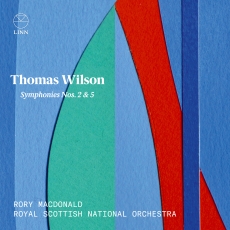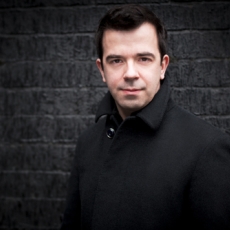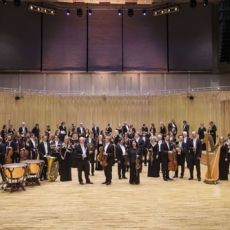Rory Macdonald & RSNO - Thomas Wilson: Symphonies Nos. 2 & 5 - Records International
As we said when enthusiastically welcoming the disc of his 3rd and 4th symphonies last year (03U012), "Wilson was a natural symphonist of the highest quality, with an individual approach to symphonic composition; he said that he thought symphonically in all his writing, because all his pieces have ‘a sense of broad, unhurried sweep, of unfolding grandness’." His tonal idiom was tough, individual and idiomatic; his use of the orchestra masterly (and highly idiosyncratic); his sense of dramatic narrative and argument unfailingly symphonic in structure. Predominantly combative and turbulent, the Second Symphony of 1965 begins with a minatory slow introduction which presents the terse material on which the entire symphony is built. The main part of the movement then attempts to reconcile this material in a succession of episodes that range from belligerent to agitated to mournfully reflective, though still with no relaxation in tension. The movement is abruptly truncated, with no resolution. The central movement combines slow movement and scherzo, beginning with a tense, strained elegy, with a sense of ominous foreboding. This uneasy, tense music is briefly interrupted by a brief, disjointed scherzo with an unstable "diabolico" feel, before resuming with a sense of despairing resignation. The brusque, relentlessly energetic finale doggedly picks up the development of the opening material where the first movement failed to resolve its conflicts. This time there is a sense of development and approaching resolution, though the conflict is fierce to the very end, the music finally resorting to pounding its conclusion home with hammering chords. The Fifth Symphony was Wilson's last completed score, a perfect farewell summation of his strengths as a remarkable symphonist, and perhaps his greatest and most individual statement in the form. The work is in four movements, played without a break, beginning with the remote threatening thunder of a theme, no less, for tympani solo, soon joined in tenebrous dialogue by a mournful cor anglé. These lowering storm clouds dominate the opening section, but it also turns out that in so doing they introduce the material on which the entire work is based, metamorphosed in Wilson's customary manner; it is this that lends his symphonic writing its remarkable cogency of structure. Two brief lightning-flares fail to interrupt the darkly brooding flow of the music, but a third takes hold and becomes the work's spiky, scurrying scherzo, punctuated by tom tom flourishes, another of this work's characteristically original features of scoring. The slow movement that follows is elegiac and haunted, with mounting anguish. At the movement's climax, the ominous tympani material from the opening is reintroduced, threateningly shadowing the plaintive final part of the movement. The finale erupts onto the scene, trenchant, aggressive and insistent, in short, guttural phrases passed around the orchestra, until suddenly a strident trumpet call and the lugubrious tympani theme blast their way into the fabric of the music, calling to a complete halt the relentless energy of the music. This leads into an extended epilogue, hushed and resigned, with melancholy wind solos over a radiant haze of strings, and the return of the distant thunder that commenced this haunting narrative on the edge of the beyond.


